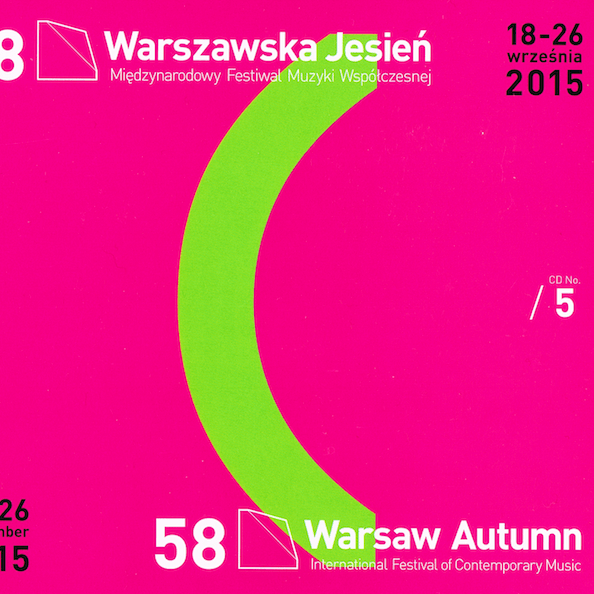RE-SLIDE (2012/2015)
RE-SLIDE (2012/2015)
for trombone and ensemble
solo: trbn-tb
ensemble: 1*.1*.1*.1*/1.1.0.0/perc/pno*/1.1.1.2.1
duration: 12 minutes
première: June 29, 2012, Konservatorium Bern, Switzerland
Members of Camerata Bern, students of Hochschule der Künste Bern
Mayumi Shimizu – trombone solo
Conducted by Michael Wendeberg
Commissioned by the music department oft he Hochschule der Künste Bern for the closing exam of Mayumi Shimizu, as a part of her Master of Arts in Specialised Performance.
New version commissioned 2015 by Deutscher Musikrat
RE-SLIDE
score preview
RE-SLIDE
(excerpt)
September 24, 2015, Warsaw Autumn, Poland
EWCM Ensemble, Stephen Menotti – trombone
Conducted by Rüdiger Bohn
Recording published on CD – 58th Warsaw Autumn Festival by Warsaw Autumn
Additional performances
EWCM Ensemble
Stephen Menotti – trombone
Conducted by Rüdiger Bohn
EWCM Ensemble
Stephen Menotti – trombone
Conducted by Rüdiger Bohn
EWCM Ensemble
Stephen Menotti – trombone
Conducted by Rüdiger Bohn
ABOUT
RE-SLIDE is the fifteenth in Vito Žuraj’s cycle of compositions with tennis-themed titles. In this case, “slide” has the double meaning of a trombone’s slide and a tennis player’s slipping and losing balance.
Scored for solo trombone and large ensemble, it is a concerto in all but name. Indeed, the degree of prominence afforded the trombone in this work is rare even in Žuraj’s works that are explicitly designated as concerti. The dominance of the trombone is not immediately apparent, however. The work opens with an arresting timbral mixture; the trombone, replete with wah-wah mute, holds sustained notes, ghosted at close intervals and rhythmic unison by a bowed vibraphone. This unlikely lyrical duo is supplied with a running commentary by the piano, which takes on the role of a percussion instrument, hammering regular interjections aggressively on its heavily dampened deeper strings.
Presently, however, the trombone detaches itself from its partners and embarks on an array of bold virtuoso gestures. The essence of the solo trombone part in this piece is the use of the overtone row that forms the basis of its tuning. By emphasising the overtone row, Žuraj effectively turns the trombone into an infinite number of “natural” brass instruments, with a new “instrument” being created every time the trombonist moves the slide.
The quarter-tone kalimba, a feature in much of Žuraj’s work of this period, provides a bridge between the microtonal tunings of the trombone and the evenly tempered semitones of the piano and the rest of the percussion.
Lending weight to the concerto character is the use of full ensemble tutti to accompany the trombone, tutti in which the entire ensemble unites in common gestures. There are even extended passages – especially for the strings – in which the typical dovetailing of complex rhythms and gestures is suddenly abandoned in favour of a rhythmic unison across the entire ensemble. The ensemble settles into two opposing rhythmic “camps”, the strings on the one hand and the winds on the other – the fact that the trombone sides with the strings emphasises the independence of its tone colour, before the work reaches a climax in which the entire ensemble proceeds in a shattering rhythmic unison. Soon, the ensemble splinters again, although the tutti character remains for a time, eventually dispersing, before the work peters out into a questioning conclusion.
Alwyn Tomas Westbrooke
RE-SLIDE is the fifteenth in Vito Žuraj’s cycle of compositions with tennis-themed titles. In this case, “slide” has the double meaning of a trombone’s slide and a tennis player’s slipping and losing balance.
Scored for solo trombone and large ensemble, it is a concerto in all but name. Indeed, the degree of prominence afforded the trombone in this work is rare even in Žuraj’s works that are explicitly designated as concerti. The dominance of the trombone is not immediately apparent, however. The work opens with an arresting timbral mixture; the trombone, replete with wah-wah mute, holds sustained notes, ghosted at close intervals and rhythmic unison by a bowed vibraphone. This unlikely lyrical duo is supplied with a running commentary by the piano, which takes on the role of a percussion instrument, hammering regular interjections aggressively on its heavily dampened deeper strings.
Presently, however, the trombone detaches itself from its partners and embarks on an array of bold virtuoso gestures. The essence of the solo trombone part in this piece is the use of the overtone row that forms the basis of its tuning. By emphasising the overtone row, Žuraj effectively turns the trombone into an infinite number of “natural” brass instruments, with a new “instrument” being created every time the trombonist moves the slide. The quarter-tone kalimba, a feature in much of Žuraj’s work of this period, provides a bridge between the microtonal tunings of the trombone and the evenly tempered semitones of the piano and the rest of the percussion.
Lending weight to the concerto character is the use of full ensemble tutti to accompany the trombone, tutti in which the entire ensemble unites in common gestures. There are even extended passages – especially for the strings – in which the typical dovetailing of complex rhythms and gestures is suddenly abandoned in favour of a rhythmic unison across the entire ensemble. The ensemble settles into two opposing rhythmic “camps”, the strings on the one hand and the winds on the other – the fact that the trombone sides with the strings emphasises the independence of its tone colour, before the work reaches a climax in which the entire ensemble proceeds in a shattering rhythmic unison. Soon, the ensemble splinters again, although the tutti character remains for a time, eventually dispersing, before the work peters out into a questioning conclusion.
Alwyn Tomas Westbrooke

